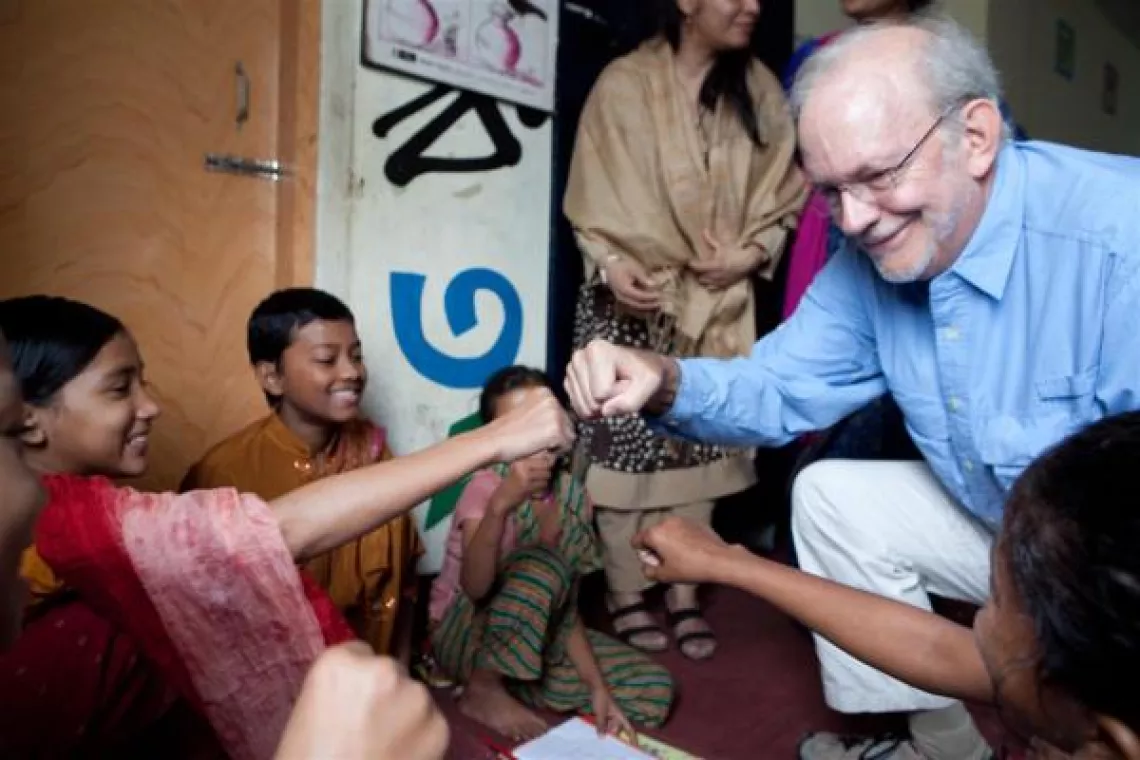Becoming the leading voice: 2006–2015
See how UNICEF has become the world’s primary voice for child survival and development.

- Available in:
- Українська
- English
As more people became aware of the inequalities facing the most vulnerable, UNICEF took a leading role to challenge systemic inequity around the world.
2010

“By helping the most disadvantaged children today – by giving them a fair chance in life – we can help break the bonds of extreme poverty tomorrow.”
A magnitude 7 earthquake kills nearly 160,000 people and displaces more than 1 million people from their homes in Haiti. UNICEF leads the international response on behalf of children.

The upheaval of the Arab Spring and the crisis in the Syrian Arab Republic pose major challenges for UNICEF and other humanitarian agencies.

2012
In joining the International Aid Transparency Initiative (IATI), UNICEF commits to greater transparency in all its work, so that its methods can be understood.
UNICEF hosts the first Forum of the Global Partnership on Children with Disabilities.

2014
UNICEF launches the first version of RapidPro – an open-source platform for sharing real-time data across health, education and youth engagement platforms.

On February 11, 2014, India – where once there were 200,000 crippling cases of polio a year – celebrates six years without a case of wild poliovirus.

2015
Mobile technology makes the distribution of medicine and supplies faster and more accurate. This becomes especially important during the Ebola crisis in West Africa.

The UNICEF Office of Innovation inspires new and creative approaches, partnerships and technologies that can improve the lives of children.
Throughout its history, UNICEF has worked to drive change for the most disadvantaged children. Today we continue to work to promote the rights and well-being of children everywhere.
Discover why we do what we do in our mandate and mission




